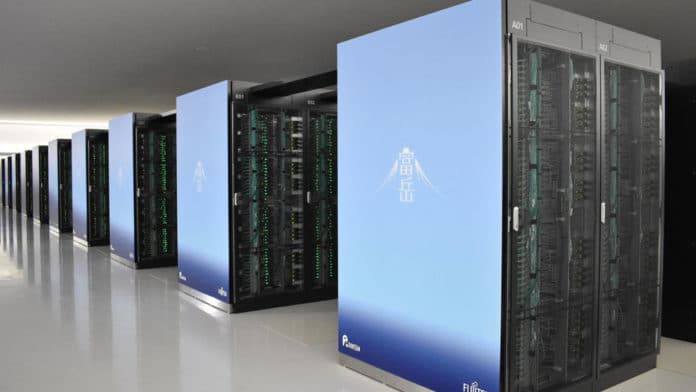Top500, the list of the world’s most powerful supercomputers, has now been released in its 56th edition since the list was created in 1993. The list is always updated twice a year (in June and November). At the top of the latest Top500 list is the ARM-based Japanese supercomputer Fugaku – followed by the USA, China, and Germany.
The supercomputer Fugaku grew its Arm A64FX capacity from 7,299,072 cores to 7,630,848 cores. Also, thanks to the additional hardware, Fugaku grew its High-Performance Linpack (HPL) to 442 petaflops, a modest increase from the 416 petaflops the system achieved when it debuted in June 2020. Fugaku was constructed by Fujitsu and is installed at the RIKEN Center for Computational Science (R-CCS) in Kobe, Japan.
Summit, an IBM-built system at the Oak Ridge National Laboratory (ORNL) in Tennessee, remains the fastest system in the US with a performance of 148.8 petaflops. It is in second place in the Top500 list. Third place went to the Sierra supercomputer, which was also built by IBM. Its yield is 94.6 petaflops. The system has 1,572 million computing cores nested on Power9 chips and NVIDIA Tesla V100 graphics processors. At number five is Selene, an NVIDIA DGX A100 SuperPOD with 63.4 petaflops that is installed in-house at NVIDIA Corp.
However, there have been some changes in the top 10 list, and there are two new powerful systems that qualify in seventh and tenth place over the world’s ten most powerful supercomputers. These are the German JUWELS Booster Module with a capacity of 44.1 petaflops, which gave it seventh place on the Top500 list. And the Dammam-7, installed at Saudi Aramco in Saudi Arabia that has a capacity of 22.4 petaflops, which gave it the tenth place among the world’s most powerful supercomputers.
The entire TOP500 list can be found here.
